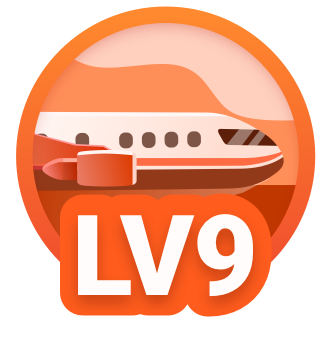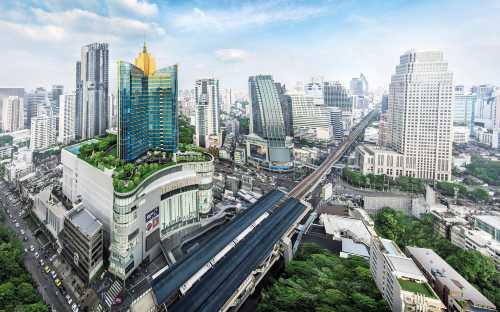Popular Trip Moments
Where Locals Walk & Lizards Roam | Stay&Play at Lub d Bangkok Chinatown | A very awesome stay at pullman hotel 🛏️ | Doraemon visits Bangkok, Thailand | [Mahanakhon Skywalk] 🇹🇭Enjoy the spectacular view from a skyscraper 314m above sea level! | Nai Ek Roll Noodle – Chinatown’s Legendary Bowl of Comfort | Laab Ubon Kontrakran – Bangkok’s Spicy Hidden Spot Loved by Locals! | Wat Arun – The Temple of Dawn That Shines All Day | Samantao Heritage Coffee: A Vintage Thai Breakfast Escape in Bangkok’s Nai Lert Park | Black Me-O Boat Noodle: Spicy Thai Noodles with a Black Cat Twist on Bangkok’s Bantadthong Road | Tulum Skybar Bangkok: Neon Nights, Skyline Views, and Mexican Vibes at This Rooftop Hotspot | Step Back in Time: Hainan-Style Breakfast at Ek Teng Phu Ki (เอกเต็งผู้กี / 益生甫記) in Bangkok’s China | Bold, Bright, and Bangkok Chic: Moxy Ratchaprasong Rocks! 🇹🇭 | Naixue | A Buffet Paradise by the River: Great Harbour ICONSIAM | National Gallery of Thailand | A journey to explore the legend of Phra Khanong, making wishes at the Mae Nak Shrine. | Bangkok Iconsiam Ultimate Shopping and Tax Refund Guide | Easy access via BTS! Discover Wat That Thong, a tranquil spot in the heart of the city | Pop Mart Shopping Guide at Sima Skytrain Station in Bangkok, Thailand | New Luxury Landmark: The Symphony of Life and Fashion at Emsphere | LOEWE Collaborates with Donut Shop! Enjoy Desserts and Photo Opportunities in Ari District | [🍰Next to W Hotel Bangkok! PAII afternoon tea is so good that you can’t bear to eat it. Check in and eat your fill~] | A sacred temple protected by Naga with over 250 years of history🙏📜✨ | Recommended treasure second-hand store in Bangkok, Thailand: PAPAYA Papaya Retro Store, suitable for check-in, shopping and taking photos📸 | Easily accessible via BTS! Visit Wat Nak Prok, the serene temple of Naga. | Bangkok Must-Try! LV x Gaggan Collaboration Restaurant | Museum Siam - Bangkok Thailand | Bangkok Art and Culture Centre | Hidden Lakeside Cafe in Bangkok's Ratchada!
Recommended Attractions at Popular Destinations
Bangkok attraction near me | Manila attraction near me | Tokyo attraction near me | Taipei attraction near me | Hong Kong attraction near me | Seoul attraction near me | Kuala Lumpur attraction near me | Los Angeles attraction near me | Shanghai attraction near me | New York attraction near me | Shenzhen attraction near me | Osaka attraction near me | Singapore attraction near me | London attraction near me | Guangzhou attraction near me | San Francisco attraction near me | Beijing attraction near me | Macau attraction near me | Bali attraction near me | Jakarta attraction near me | Paris attraction near me | Ho Chi Minh City attraction near me | Istanbul attraction near me | Phuket attraction near me | Chicago attraction near me | Seattle attraction near me | Toronto attraction near me | Orlando attraction near me | Cebu attraction near me | Chiang Mai attraction near me
Popular Attractions
MuTianYu Great Wall | Istiqlal Mosque | House of Dancing Water | Mount Hua | Singapore Oceanarium | The Qiao Family Courtyard | Yu Garden | Musee de l'Orangerie | Cangshan Mountain | Sanzen-in | Tekapo Springs | Sentosa | Tokyo Skytree | Catacombs of Paris | Beijing Grand View Garden | ATV Experience | R.D Rodrigo Outlook | Hyogo Prefectural Museum of Art | TSS Earnslaw | Gereja Injil Sepenuh Sabah(GISS) Narandang | Taramata Mandir | Kráľovstvo lesa Bachledka | Elchgehege | Hawaii Healing Arts College & Massage Professionals | PRAGNAMMA TALLI TEMPLE | Shri Shantinath Digambar Jain Mandir | Arte Pubblica 2015 - Alice Pasquini "See me grow" | Artistas del Acero | Sekisuiji | Shanghai Wild Animal Park
Popular Restaurants in Bangkok
Sra Bua by Kiin Kiin | MEZZALUNA | NAHM | MOON BAR | Red sky | Paste Bangkok | Le Normandie | The House of Smooth Curry | The Local | Saneh Jaan | Supanniga Eating Room Thonglor | Gaa | Elements, inspired by Ciel Bleu | RAIN TREE CAFÉ | Breeze | Biscotti | Above Eleven | The Kitchen Table | NAN BEI | El Gaucho Argentinian Steakhouse(Sukhumvit Soi 19) | Paii | Chim By Siam Wisdom | NEXT2 Café | Sorn | The Dining Room at Grand Hyatt Erawan Bangkok | UNO MAS at Centara Grand at centralwOrld | Cocotte Farm Roast & Winery | Patara Fine Thai Cuisine | Supanniga Eating Room, Sathorn 10 | Shang Palace
Popular Ranked Lists
Popular Luxury Hotels in Half Moon Bay | Popular Must-Visit Restaurants in Bangkok | Top 9 Best Things to Do in Handan | Popular Must-Visit Restaurants in Songyang | Popular Must-Visit Restaurants in Florence | Popular Luxury Hotels in Milaidhoo | Popular Luxury Hotels in Fasano | Top 15 Best Things to Do in Gold Coast | Popular Luxury Hotels in Tesuque | Popular Best Things to Do in Dongtai | Popular Must-Visit Restaurants in Fukuoka | Popular Must-Visit Restaurants in Barcelona | Top 9 Best Things to Do in Tongren | Popular Luxury Hotels in Washington | Popular Best Things to Do in Shenmu | Popular Best Things to Do in Shandong | Popular Must-Visit Restaurants in Tokyo | Popular Premium Hotels in Periyar | Popular Premium Hotels Near Stordal | Popular Must-Visit Restaurants in Chaozhou | Top 8 Best Things to Do in Antu | Popular Must-Visit Restaurants in London | Popular Luxury Hotels in Valle d'Aosta | Popular Premium Hotels in Jingshan | Top 3 Best Things to Do in Luxi | Top 4 Best Things to Do in Chaozhou | Popular Must-Visit Restaurants in Madrid | Popular Luxury Hotels Near Dolgellau | Popular Local Restaurants in Bangkok | Popular Must-Visit Restaurants in Seoul
Payment Methods
Our Partners
Copyright © 2025 Trip.com Travel Singapore Pte. Ltd. All rights reserved
Site Operator: Trip.com Travel Singapore Pte. Ltd.
Site Operator: Trip.com Travel Singapore Pte. Ltd.






















